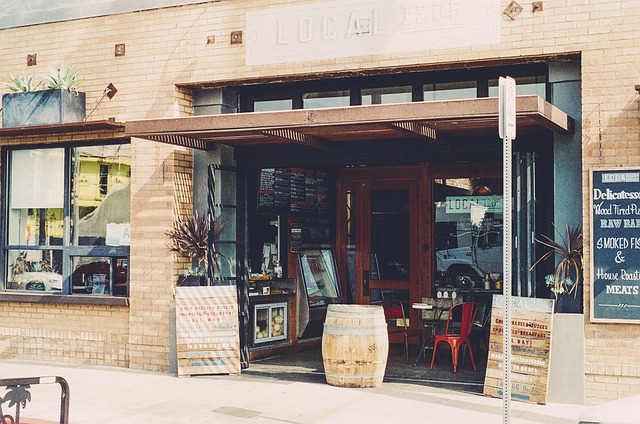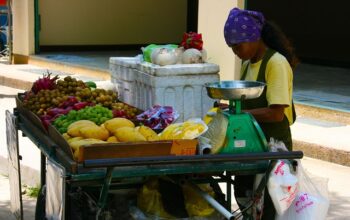Local food delivery and meal preparation services have transformed the way consumers access fresh, sustainably sourced produce, marking a significant shift from traditional distribution networks to direct-to-consumer channels that support local farms. These services not only offer convenience by delivering fresh ingredients directly to doorsteps but also play a crucial role in reducing carbon footprints associated with long-distance food transport. They provide vital market access for small and medium-sized farms, enabling them to compete without the need for large infrastructure or capital investments. By integrating meal preparation options, these platforms empower consumers to make environmentally conscious choices that align with their values on sustainability and nutrition. This synergy not only bolsters local economies but also promotes a sustainable ecosystem for food consumption, making it easier for individuals to contribute to community well-being and environmental responsibility through their everyday dining decisions. In essence, opting for local food delivery and meal preparation is a choice that benefits both the economy and the environment by fostering sustainable practices and supporting local producers.
Local food delivery has surged in popularity, offering a direct lifeline to nearby farms. This article explores the transformative role of such services in nurturing local agriculture, bridging the gap between farmers and consumers, and highlighting the economic and environmental advantages of meal preparation choices that favor local produce. By delving into these topics, we’ll uncover how supporting local food delivery services can make a tangible difference in sustaining community farms and promoting eco-conscious consumption habits.
- The Resurgence of Local Food Delivery and Its Role in Sustaining Local Farms
- How Local Food Delivery Services are Bridging the Gap Between Farmers and Consumers
- The Economic and Environmental Benefits of Choosing Local Food Delivery and Meal Preparation Options
The Resurgence of Local Food Delivery and Its Role in Sustaining Local Farms

The resurgence of local food delivery services has been a significant boon for local farms, fostering a direct-to-consumer pipeline that bypasses traditional wholesale and distribution channels. This shift towards more personalized and sustainable consumption patterns is not merely a temporary trend but reflects a fundamental change in consumer behavior. As awareness of the environmental impact of food transportation grows, so does the demand for local produce delivered through efficient logistics networks. These services ensure that fresh ingredients reach dinner tables swiftly while reducing the carbon footprint associated with long-distance shipping. Furthermore, they offer a lifeline to small and medium-sized farms by providing them with access to wider markets without the need for extensive infrastructure or capital investment. The growth of meal preparation options within local food delivery models further empowers consumers to make dietary choices that align with their health and environmental values, all while keeping a spotlight on the bounty of local agriculture. This symbiotic relationship between local food delivery services and local farms not only supports rural economies but also enriches urban diets with seasonal offerings, thereby creating a resilient and sustainable ecosystem for food consumption.
How Local Food Delivery Services are Bridging the Gap Between Farmers and Consumers

Local food delivery services have emerged as a critical bridge between farmers and consumers, fostering a direct line of communication and supply that benefits both parties. These platforms not only streamline the process of sourcing fresh produce directly from local farms but also provide a transparent marketplace where consumers can make informed choices about their food consumption. By partnering with meal preparation services, these delivery systems ensure that the fruits and vegetables harvested just days prior are transformed into nutritious, ready-to-eat meals, reducing food waste and extending the shelf life of fresh ingredients. This symbiotic relationship allows consumers to enjoy a diverse array of flavors and dishes while supporting local agriculture, thereby keeping more money within the community and reducing the carbon footprint associated with long-distance transportation of food items. The convenience of having fresh, locally-sourced meals delivered directly to one’s doorstep is transforming the way people eat, making it easier than ever to make environmentally and economically sustainable choices.
The Economic and Environmental Benefits of Choosing Local Food Delivery and Meal Preparation Options

Opting for local food delivery and meal preparation services significantly bolsters both economic vitality and environmental health in communities. By choosing to support local food delivery, consumers directly contribute to the stability and growth of nearby farms. This economic ripple effect extends beyond the farmers themselves; it encompasses the entire local supply chain, including suppliers, transporters, and retailers who benefit from increased demand for local produce. These services not only sustain jobs but also foster new opportunities within the community.
On an environmental front, local food delivery and meal preparation options present a compelling advantage over their long-distance counterparts. Reducing the carbon footprint is a primary benefit, as locally sourced foods require less transportation, thus lowering greenhouse gas emissions. Additionally, supporting local agriculture often means embracing sustainable farming practices that preserve natural resources and promote biodiversity. The fresher produce reaches consumers faster, which minimizes spoilage and waste, further contributing to the conservation of resources. Thus, the choice to engage with local food delivery and meal preparation is not only a commitment to the economic health of one’s community but also a step towards more sustainable environmental practices.
Local food delivery has emerged as a pivotal lifeline for small-scale farmers, transforming the relationship between consumers and local agriculture. By providing a direct link to fresh produce and sustainable meal options, these services not only bolster the economic viability of farms but also contribute significantly to environmental conservation. As the demand for such services grows, it becomes clear that local food delivery and meal preparation are more than just trends; they represent a shift towards a more resilient and community-focused food system. Embracing these options fosters a healthier planet and stronger local economies, making the choice to support local food delivery a decision with far-reaching positive effects.



